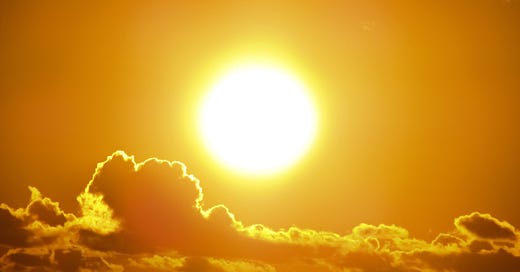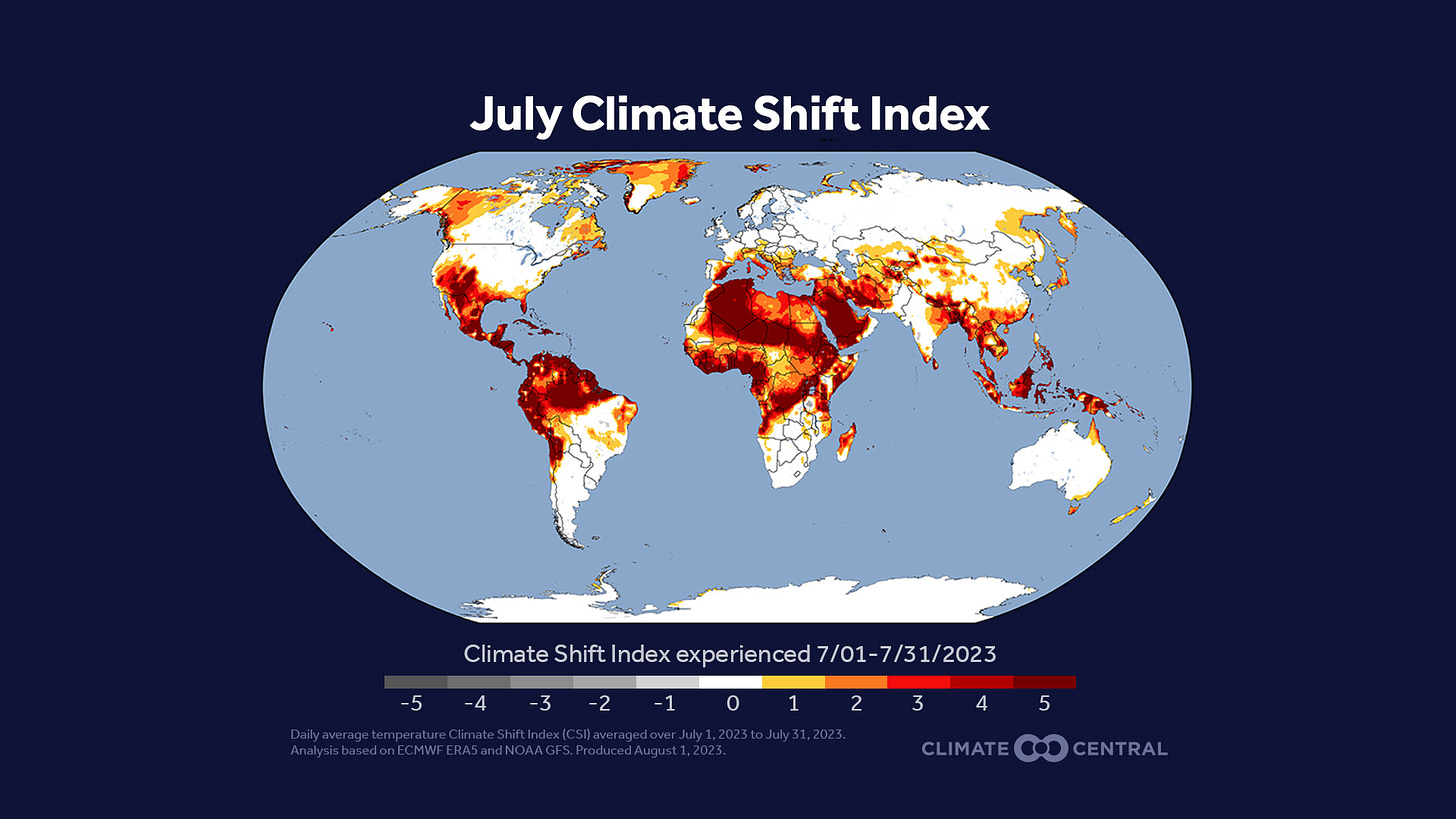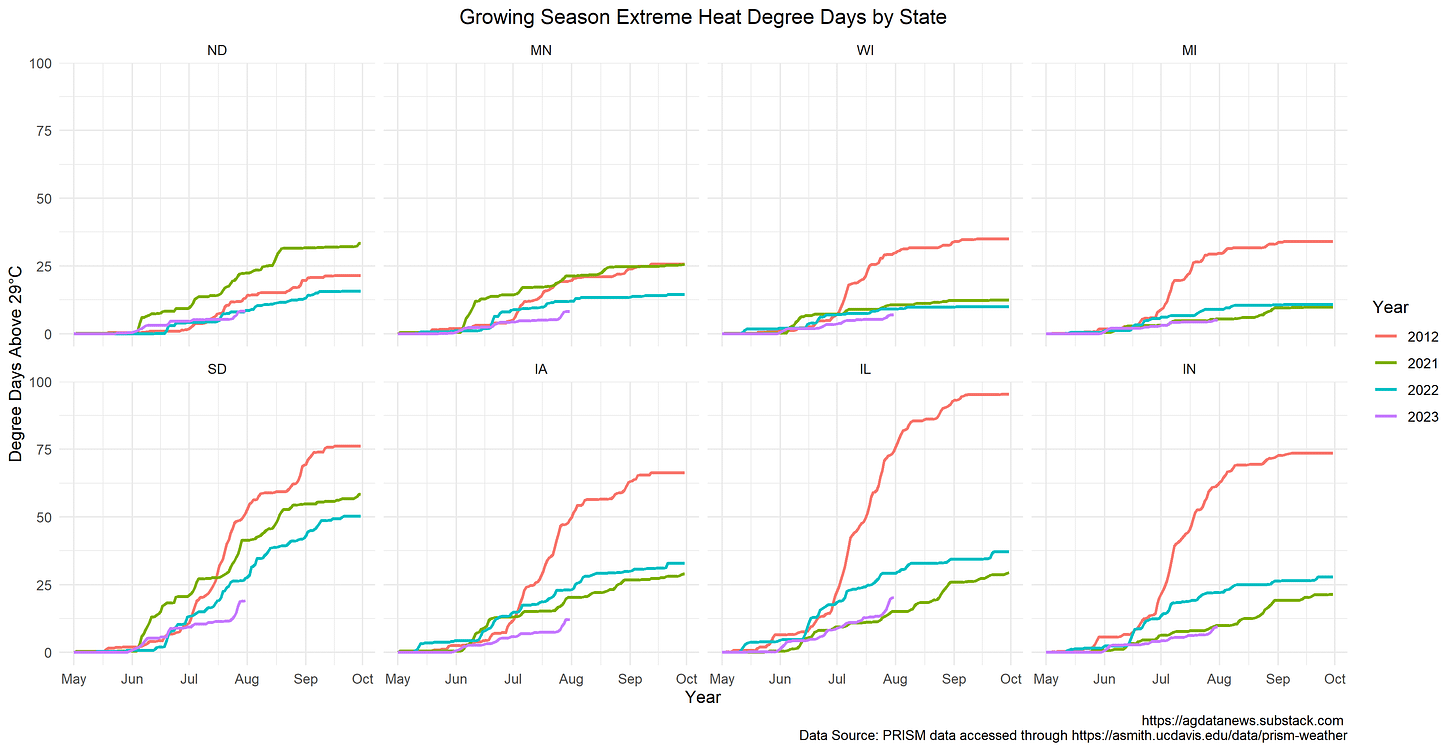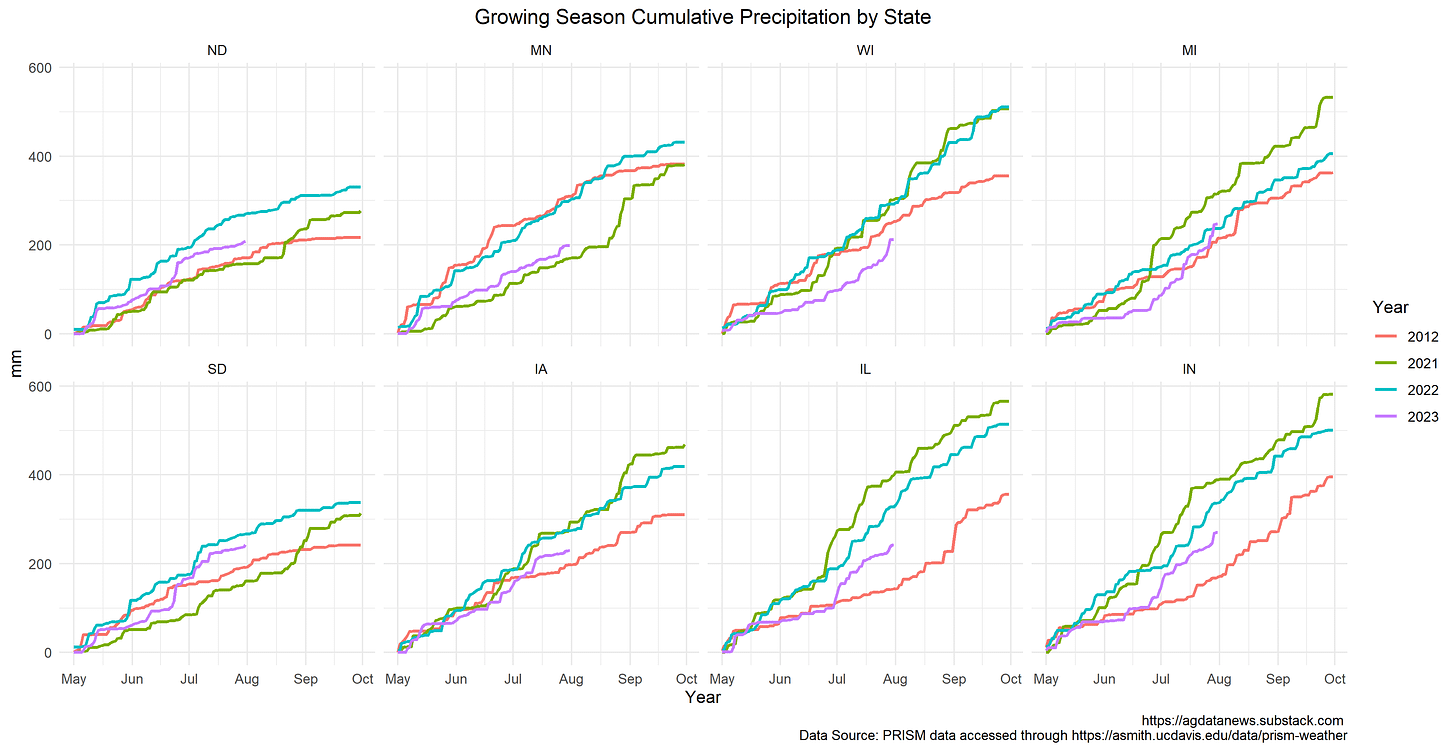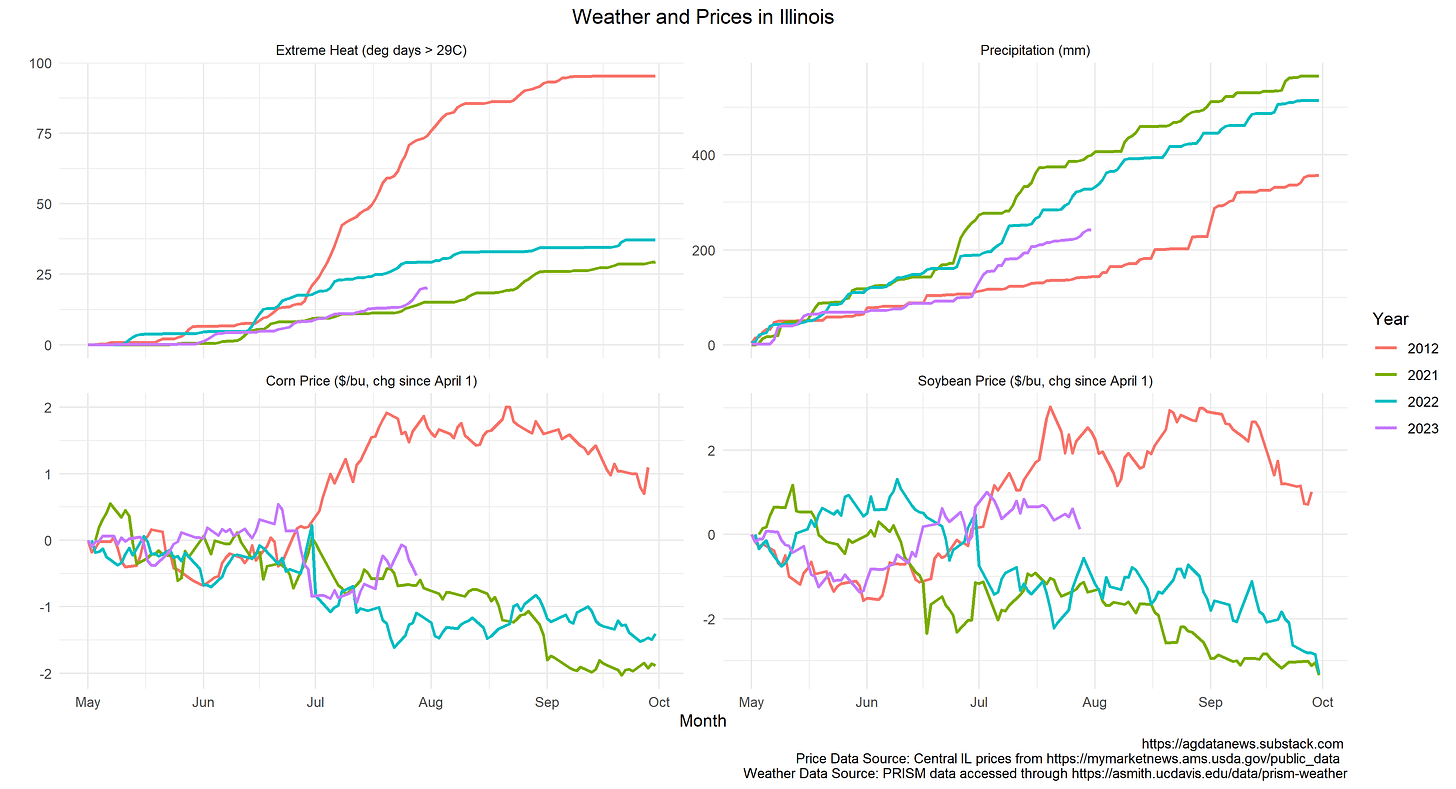Has This Summer Been Too Hot for Crops?

July 2023 was the hottest month in earth's recorded history. Temperatures exceeded 100°F in parts of South America, where it is the middle of winter! The ocean water in one spot off the coast of Florida hit 101°F, which must be unpleasant for marine life.
Extreme heat has a detrimental effect on crop production, a fact well illustrated in this paper by Wolfram Schlenker and Mike Roberts. Once the temperature gets above about 29°C (84°F), yields drop precipitously. The further above 29°C, the lower the yield; the more days above 29°C, the lower the yield. Every 24 hours spent an additional degree above 29°C reduces corn yield by about 0.6%.

Schlenker and Roberts, along with numerous researchers before and since, quantify temperature exposure using degree days. To calculate degree days above 29°C, compute how many degrees above 29°C the temperature is on each day and then sum across days. There are other details (e.g., accounting for the fact that the temperature varies throughout the day). If you're interested in those, start by reading Section 4.2.2 here and follow the relevant links.
In 2021 and 2022, central corn belt states like Iowa, Illinois, and Indiana enjoyed high corn yields. These same states were hit hardest by the 2012 drought. States further to the northwest, such as the Dakotas and Minnesota were hit less hard by the 2012 drought, but had relatively low yields in 2021.
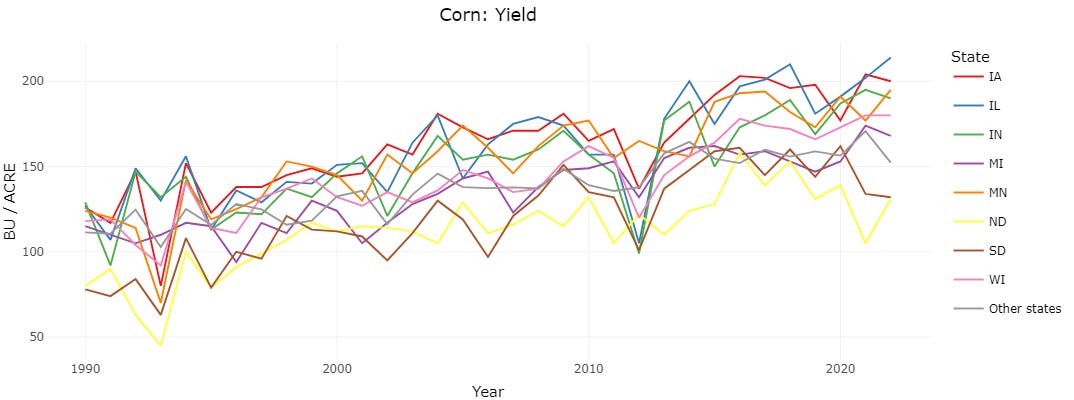
The plots below show cumulative degree days above 29°C since April 1 for eight corn producing states. We see the large number of extreme heat degree days in 2012 in the central corn belt states. In North Dakota and Minnesota, 2021 was as hot or hotter than 2012, which matches the yield outcomes in those years.
So far, 2023 has experienced fewer extreme heat degree days than 2012, 2021, or 2022, which bodes well for yields.
Scientists debate how much of the damage to yields comes from the heat versus the fact that hot weather means less water available to plants. Early season precipitation was low in many states this year, which fueled concerns about yields. However, rain in July has allayed those fears.
Prices provide a strong indication of likely yields. Prices increased dramatically when extreme heat hit the corn belt in July 2012. Prices declined through the summer in 2021 and 2022 as the weather continued to be favorable for crops. This year, prices appear to be following the 2021 and 2022 trajectory, especially for corn.
USDA is projecting a corn yield of 177.5 bushels per acre for 2023, which is higher than both 2021 and 2022. It is projecting a soybean yield of 52 bushels per acre, also higher than 2021 and 2022. Private forecasts are similarly optimistic.
It has not been too hot for the major US crops (so far).
I grabbed the weather data from our new weather data app using this R code. If you want easy access to United States weather data by zipcode, county, or state, this is the place for you. Details here.
You can view the yield figure in this article using our US Crops data app, where you can also download the data with one click. Check out all of our data apps here.

